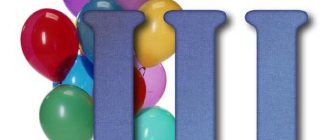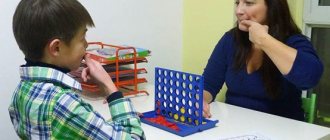Home — Speech therapist online
For many cities, the absence of any specialist is not uncommon. Of course, you can spend time and find the right professional elsewhere. But what if you need not one, but several appointments over a long period of time? For example, classes with a speech pathologist or psychotherapist can last for months.
The modern world requires modern solutions. Our center conducts speech therapy lessons online for adults and children, and also provides consultations with a speech therapist and speech pathologist online.
Seek an online consultation with a speech therapist
You can from any region of Russia or another country, from any place convenient for you. You can do:
- from home;
- from the office;
- in the country.
What you will need for the lesson is a computer/mobile phone/tablet with Internet access, a headset and a camera.
How do we do this?
The comprehensive approach we use to overcome the absence or underdevelopment of speech in a child of early and preschool age can be conditionally combined into several blocks:
- medical block - accounting for medical tests, the effects of medications, additional studies (if necessary).
- psychological block – providing mother with assistance in raising and educating a child with speech and cognitive problems.
- pedagogical block - the formation of speech and other subject areas (attention, memory, thinking, elementary mathematical concepts, etc.) using various original (N.A. Shishkina) and modern teaching methods (L.G. Peterson, Montessori pedagogy, ABA elements -therapy, etc.)
The relationship between psychology, medicine and pedagogy contributes to the formation of a scientific, holistic view of the child’s mental and physical development, which allows us to obtain a comprehensive, systemic vision of the problem of a child’s speech underdevelopment, and more than 8 years of experience in this direction makes it possible to obtain positive results as soon as possible!
Speech therapy for dummies
Articulation gymnastics
Before starting articulation gymnastics, it is advisable to perform a self-massage of the face. Regularly performing articulatory exercises will help: • Improve blood supply to the articulatory organs, • Strengthen the muscular system of the tongue, lips, cheeks • Teach the child to maintain a certain articulatory position, increase the range of movements, reduce spasticity (tension) of the articulatory organs. It is better to perform articulatory gymnastics while sitting in front of a mirror to visually control the exercises. Here we present a set of universal exercises for the lips and tongue, which are performed when the main groups of sounds are violated. Gymnastics in the structure of a speech therapy session should not take much time. At the stage of preparation for staging sounds - this can be half of the lesson. In cases where a child has dysarthria or rhinolalia, be sure to perform speech therapy massage and breathing exercises.
“Smile” (“fence”)
Smile without tension so that the front upper and lower teeth are visible. Hold for 5-10 seconds. Make sure that your lips do not turn inward when you smile.
“Tube” (“proboscis”)
Pull your closed lips forward. Hold them in this position while counting from 1 to 5-10. If the child cannot independently stretch his lips, you can invite him to reach for the candy with his lips. You can sing the sound U with your child. In the future, you can alternate exercises 1 and 2
“The house opens” (“hippopotamus”)
Smile slightly, slowly open your mouth, hold your mouth open for 5-10 seconds, slowly close it. The tongue lies quietly behind the teeth or on the lower lip.4. “Curious tongue” Smile, open your mouth slightly and move your tongue back and forth. Place your wide tongue on your lower lip and remove it. The mouth remains open all the time. Do the exercise 8-10 times
“The tongue greets the chin”
Smile, open your mouth slightly and stretch your tongue down to your chin. Do the exercise 5-10 times
“The tongue greets the upper lip”
Smile slightly, open your mouth slightly, place the wide edge of your tongue on your upper lip (with a shortened frenulum, during this exercise you should stroke the tongue with a spatula in the direction from the frenulum to the tip along the underside of the tongue). In the future, you can alternate exercises 5-6: “swing”.
"Monkey"
Open your mouth slightly and place your tongue between your lower lip and lower teeth. The lips are brought together. Hold in this position for 5 seconds
"Bulldog"
From the “monkey” position, move your tongue to a position between the upper lip and upper teeth. Lips close. Hold for 5 seconds
"Hamster"
Mouth closed. The tongue rests alternately on the right and left cheeks, remaining in each position for 3-5 seconds.
"Circle"
Mouth closed. The tongue moves from the inside, smoothly outlining a circle with the tip of the tongue (“bulldog” - right cheek - “monkey” - left cheek, etc., then in the opposite direction). Perform 5-6 circles in each direction.
“Let’s punish the naughty tongue”
Smile, open your mouth slightly, calmly put your tongue on your lower lip, slapping it with your lips, say: Five-five-five-five...”. It's easiest to spank the tip, then spank the middle of the tongue. Slowly move your tongue forward and backward. The exercise relieves excess tension on the tongue.
“Brushing teeth outside”
Smile, open your mouth slightly, show your teeth and run your wide tongue over the outside of your upper teeth, imitating the cleaning movements of a toothbrush. We also brush the lower teeth. Perform each exercise 3-5 times
"Let's bite the tongue"
Smile, open your mouth slightly, bite the tip of your tongue. You can make the exercise more difficult by simultaneously biting your tongue and moving it back and forth. This exercise is good for relieving excessive tongue tension.
"Spatula"
Smile, open your mouth slightly, place the wide front edge of your tongue on your lower lip. Hold in this position for a count from 1 to 5-10.
“Blowing on the spatula”
Move your tongue to the “Spatula” position and blow into a small bottle, onto a pinwheel or a piece of cotton wool. It is fashionable to “draw” a groove in the center of the tongue with a probe for producing whistling sounds. The exercise prepares the tongue well for making whistling sounds. It should be performed after the “spatula” has been created.
"Gorka" ("bridge")
"The wind blows from the hill"
Place the tongue in the “slide” position, and then calmly and smoothly blow along the middle of the tongue. The air should be cold. If, without changing the position of the tongue, you cover your mouth, leaving a small gap between the teeth and blow, then the child may produce the sound S. (do not show the sample!)
“Cleaning the lower teeth” (from the inside)
Smile, show your teeth, cover your mouth and use the tip of your tongue to “clean” your lower teeth from the inside. Move the tongue from side to side, making sure that it is at the gums. The exercise is useful for interdental sigmatism. In this case, it is useful to use a vestibular plate with a flap
"Coil"
Smile, open your mouth. The tip of the tongue rests on the lower teeth from the inside (“mountain”). Roll out the wide tongue forward and move it deep into the mouth (slide). Repeat the exercise 8-10 times at a calm pace. Recommended when preparing the tongue for making whistling sounds.
“Chewing a pancake”
Smile, open your mouth. The tip of the tongue rests on the lower teeth from the inside (“mountain”). Pull the tongue into the “coil” position and bite the curled tongue. Perform 10-15 times. Useful for preparing the tongue for S.
"Cup"
Smile, open your mouth and place your tongue at the top in the shape of a cup. If the “cup” doesn’t work out, then you need to continue doing exercise 10 “Let’s punish the naughty tongue.” During this exercise, it is recommended to help the child lift the tongue with a spatula or finger. Hold in the cup position for 5-10 seconds. Recommended during the period of preparing the tongue for the production of sibilants and sonorates
"Delicious jam"
Smile, open your mouth and lick your upper lip with your tongue in a “cup” shape. Movements are directed from top to bottom. You can continue the movement and remove your tongue into your mouth without destroying the “cup.” You need to ensure that the lower jaw is motionless during this exercise. The exercise helps in preparing for the production of sibilants and sonors.
"Steps"
(alternating: “cup” on the upper lip, “cup” on the upper teeth, “cup” inside the mouth behind the teeth. We hold the tongue in each position for 3-5 seconds.
"Focus"
Raise your tongue to the “cup” position and gently blow on the tip of your nose. You can put a piece of cotton wool on the tip of your nose. During the blast, it will fly straight up. This exercise is great for learning how to speak sibilants and sonorants.
"Don't break the cup"
Give the tongue a “cup” shape and move it back and forth, maintaining the “cup” shape. Hold the tongue in each phase for 3-5 seconds.
“Brushing the upper teeth” (from the inside)
Smile, open your mouth and “clean” your upper teeth from the inside with a wide tongue, moving from side to side. The tip of the tongue moves at the upper alveoli. The exercise is good for developing the upward movement of the tongue for sibilants and sonorants.
"Painter"
Smile, open your mouth and “paint” the hard palate (“ceiling”) with the tip of your tongue, moving your tongue back and forth, stroking the palate
"Drummer"
Smile, open your mouth, place your tongue behind your upper teeth, repeat loudly, clearly, repeatedly: “D-D-D...”. Gradually speed up the pace, do not bring your teeth closer together. Then add movement with a cotton swab, ball probe or finger across the tongue - we get a sound vaguely reminiscent of R
"Horse"
Smile, open your mouth wide and click the tip of your tongue at the top. Let's speed up the pace. Make sure that the lower jaw does not move.
"Fungus"
Smile, suck your tongue to the roof of your mouth so that the hyoid ligament stretches (“mushroom stalk”). Hold your tongue in this position for 5-10 minutes. If you cannot do this, then return to the “horse” exercise. The exercise is aimed at stretching the hyoid frenulum.
"Harmonic"
You can perform this exercise after you manage to keep your tongue in the “mushroom” position. In the “mushroom” position, open and close your mouth (like the bellows of an accordion stretch). The exercise stretches the hyoid ligament well.
"Coachman"
Close your lips and blow hard through them. The lips vibrate and a characteristic “whoa” sound is heard. Option: place the wide edge of your tongue between your lips and blow. The tongue will vibrate along with the lips. Wear a mask. The child spits great while doing this preparatory exercise for the sound R.
"Needle"
Open your mouth, stick out your tongue as far as possible, tense it, make it narrow and hold in this position for a count of 10
"Pendulum"
Pull your tongue out of your mouth into the “needle” position and move it from side to side with a large amplitude. Do this 10-15 times. The lower jaw does not move with the tongue! The tongue does not touch the lower lip
"Turkey" ("talker")
Smile, show your teeth, open your mouth slightly, put your wide tongue on your upper lip and make quick movements with the tip of your tongue along the upper lip back and forth, trying not to lift your tongue from the upper lip. Then turn on the voice. The result will be a funny “chatterbox” (sound similar to “bl-bl...”
"Swing"
Smile, show your teeth, open your mouth slightly, put your wide tongue behind your lower teeth (from the inside) and hold in this position for 3-5 seconds. Then lift your wide tongue by the upper teeth (from the inside) and hold for 3 seconds. So we alternately change the position of the tongue 5-6 times “swing the tongue”. This exercise is useful when working on hissing and whistling sounds.
"Steamboat"
Smile, put your tongue between your teeth, bite it and sing: “YYYYY.” The result will be a sound very similar to L. Don't show the sample! This exercise is basic for setting the L sound.
Procedure for consultation:
- You send an application using the site contacts: By mail – Or contact phone number – +79851862798 administrator We will agree on the first consultation (date, time).
- The duration of the consultation is from 30 to 50 minutes, depending on the age of the child and the severity of speech and cognitive disorders.
- The child is examined using speech therapy and psychological methods:
Observation method
- active or passive observation of the child is organized in free activity, in joint activity with parents, i.e. in a natural situation for the child. Using the observation method, it is possible to identify and evaluate such components of a child’s activity as obsessive or stereotypical actions, pronounced affective and emotional reactions, manifestations of anxiety, and what are the features of his motor development. Based on the results of observation, the speech therapist-defectologist makes assumptions about the qualitative side and level of the child’s problems, which allows him to optimally select diagnostic tools and correctly organize further study of the child.
Conversation method
— the conversation involves the speech therapist obtaining information about the child’s developmental characteristics as a result of discussing them with the parents. The purpose of the conversation is to exchange opinions about the mental and speech development of the child. Based on the results of the conversation, the speech pathologist-defectologist outlines ways for further examination of the child.
Method of experimental study of a child
— the experimental method involves collecting facts in specially created conditions that ensure the active manifestation of the phenomena being studied. The experiment is carried out using specially selected experimental techniques (performing special tasks under the guidance of a speech therapist-defectologist).
- Test data and medication prescriptions are discussed.
- If you are satisfied with our activities and their results, then the last 5 minutes are allocated to organizing online classes
(More details).
This video shows the initial online consultation of a mother with a non-speaking young child, if you use the online speech therapist service:
- Cost - the price is 5,000 rubles for a consultation (which includes an analysis of the materials you sent, a conversation, an examination).
- If you pay in euros or dollars, then the calculation is based on the Central Bank exchange rate on the day of payment.
- Payment methods – From an account in Yandex.Money (Yandex wallet), From a bank card, Payment by code through a terminal, Payment from a WebMoney account, Payment through Alfa-Click. Payment is made using Yandex checkout. It doesn’t matter where you are, you can pay for your order using Yandex.checkout from anywhere in the world. Yandex.Checkout is a payment system that allows you to make secure payments on the Internet and securely store all information about your deposits and payments.
- If you have paid, but due to changed circumstances you cannot study, no money will be charged, since it is possible to transfer this money to the next lesson.
- If you have paid, but your circumstances have changed and you are unable to study, then the amount you paid will be returned, excluding interest charged by payment systems.
Cost: 5000 rub.
Speech therapist online, Skype. Distance (remote) speech therapy video classes.
Classes are carried out only in the presence of parents - only a few children are able to study without an adult.
The speech therapist must have extensive experience in correcting each disorder. He must have a large number of techniques in order to select the most effective ones via Skype.
Problem with choosing speech therapists: When I started working via Skype in 2010, everyone said that speech therapy via Skype was impossible. And I spent a lot of time and effort to convince those who doubted that the work of a speech therapist via Skype can be no worse than working “live”. Now, years later, I have something to share with speech therapists - how to organize my work, because not everything is as simple as I would like.
In Europe and America, speech therapists started working via Skype earlier than I did. The cost of classes with foreign speech therapists is either the same as for the owners of private offices, or may be higher. This is due to the fact that you can engage in private practice abroad if you have special education and work experience in government agencies for at least 5 years. For example, in England, banks will not issue a loan to open your own account if these 2 conditions are not met, and marketers will refuse to draw up a business plan and advertise to someone who does not have special education and professional work experience. Accordingly, only professionals with work experience began to offer their services via Skype abroad. They focus on 2 types of help: help for those who do not have a speech therapist nearby, and when all other speech therapists cannot cope and a higher-level professional is needed. Therefore, among speech therapists working via Skype abroad, you can find many university teachers and professors with scientific degrees. Accordingly, they have a price per hour of lesson of up to 100 euros. Foreign researchers in speech therapy were the first to master the achievements of “scientific and technological progress” - the use of video communication.
10 years ago in Russia there was a similar practice - out of 10 speech therapists there was only one who did not have a higher defectological education in the specialty of speech therapy. Currently, the situation has changed dramatically - now for every 10 people applying for speech therapy services, only one has a higher specialized education. The bad thing is not that these non-specialists can cope with only 1-3 diagnoses, but that they cannot recognize the remaining diagnoses. And once a person gets there, he simply wastes time, because such “specialists” are not able to help him. The saddest thing is that this trend began in Russia with government institutions - when it became possible to hire non-speech therapists in kindergartens as speech therapists, according to the order of the Ministry of Education. According to our data for 2021, the number of non-specialists working both “live” and via Skype in Russia is the same. Therefore, you should not delude yourself that if good professionals work abroad via Skype, then the situation with Russian speech therapists is the same. But you shouldn’t think that only scammers work on the Internet. And you should approach choosing a speech therapist via Skype with the same parameters as when choosing a speech therapist in person.
If for parents classes via Skype with a child look quite simple and convenient, then for a speech therapist working on Skype, not everything is so simple. Organization of a workplace for a speech therapist.
Speech therapist lessons for children online
An online speech therapist for a child will help eliminate speech deficiencies that bother you:
- sound pronunciation correction;
- development of auditory attention;
- correction of oral and written speech;
- enrichment, activation of vocabulary;
- preparation for school/support of primary classes.
In addition, the teacher will definitely conduct a diagnosis and give recommendations for parents.
Parents of children with disabilities can also receive advice.










